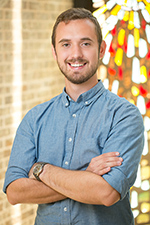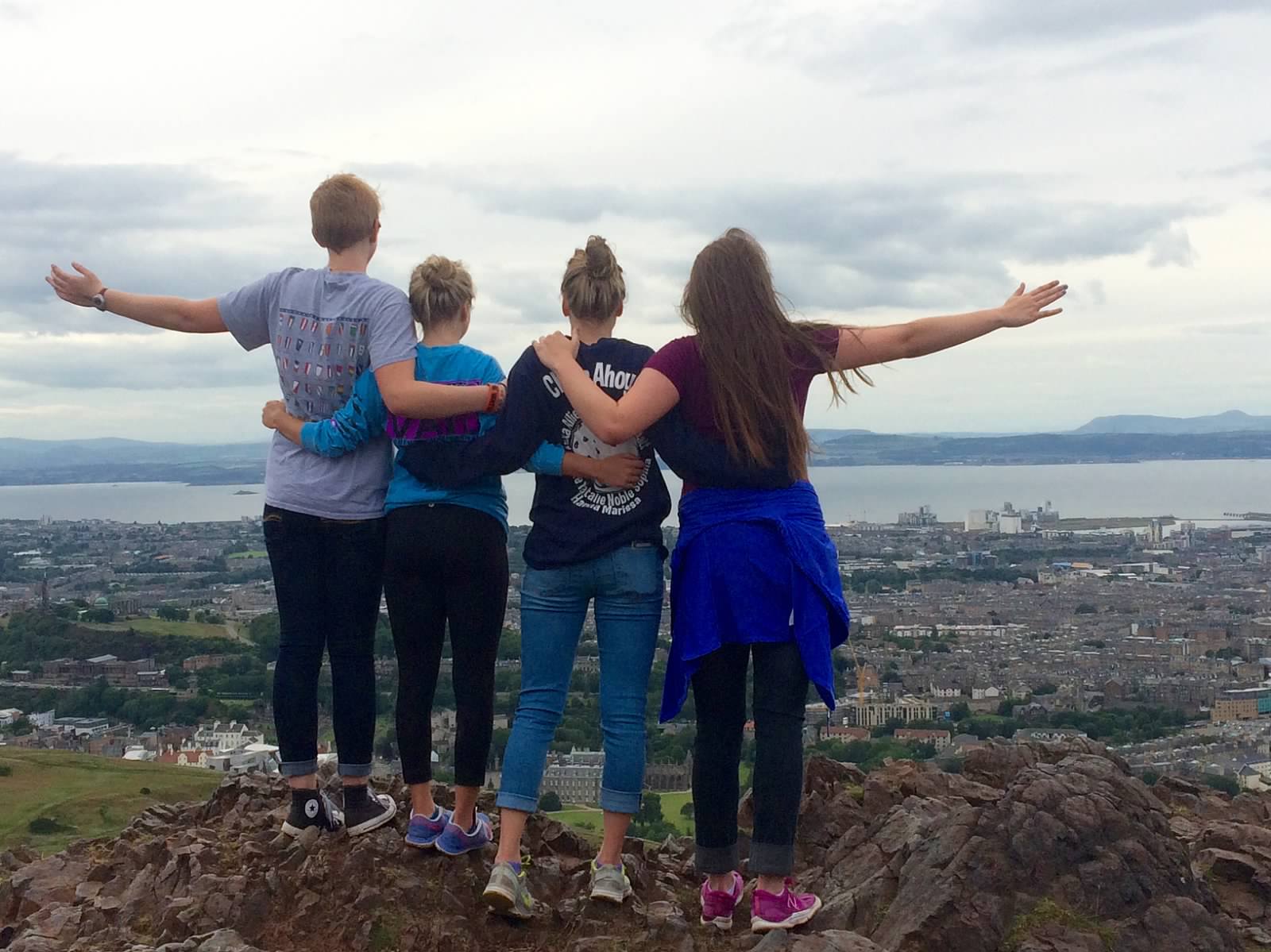By Colin Hills, Director of Youth Ministries
The commitment to take a group of youth on pilgrimage halfway around the world is not a small one. It involves significant dedication of time and resources from multiple individuals and ministries within Transfiguration; each trip costs a little over three times the annual budget for Youth Ministries. We spend a year in preparation: getting to know each other, becoming familiar with the spiritual practices inherent in pilgrimage, and fundraising like mad. All this we do for a single, ten-day trip to Scotland.
That begs the question: Why? What is it about the pilgrimage that makes it worth all the effort? It is a fair question, and one that requires a complex answer. Pilgrimage is one of the oldest and most common acts of spiritual devotion in the world. It harkens from the days when one had to travel a great distance on foot or horseback to experience the center of their religious world. The notion of pilgrimage drips with meaning: a long, arduous journey undertaken with only the bare necessities. A pursuit of the divine. A time spent in prayer and fellowship with other believers.
We see the trappings of pilgrimage all around us in our lives. We make a short journey every week to church. We walk up the aisle, flanked by the stations of the cross, to receive communion and back to the pew just as we prepare to re-enter the world. Each week, we tread upon a labyrinth designed for the express purpose of walking meditation. Yet, despite being surrounded by these and so many other hallmarks of a spiritually devoted journey, we often forget or ignore them. We often become so enraptured with our lives – hitting our next professional goal, paying that one nagging bill, completing that assignment – that the significance of those smaller, more common opportunities for pilgrimage become lost.
short journey every week to church. We walk up the aisle, flanked by the stations of the cross, to receive communion and back to the pew just as we prepare to re-enter the world. Each week, we tread upon a labyrinth designed for the express purpose of walking meditation. Yet, despite being surrounded by these and so many other hallmarks of a spiritually devoted journey, we often forget or ignore them. We often become so enraptured with our lives – hitting our next professional goal, paying that one nagging bill, completing that assignment – that the significance of those smaller, more common opportunities for pilgrimage become lost.
Occasionally, we have to remove ourselves from our usual context in order to shed distraction and focus on the things we’ve been missing. Most commonly, we call that retreat, and we might take a couple of nights, or a long weekend to give it a go. However, in the span of three days, we might get just a few hours of truly devotional time. Our first day, we work to let go of our daily lives. Our first night, we might not sleep well out of our own beds. Our second morning, we must prepare for the day ahead; we’re still getting used to this new place. Our second night, we still have not quite acclimated to the accommodations, and might begin thinking about the next day. Our third day, we begin to pack up and reorient ourselves to the lives we are about to re-enter. So, we are lucky to have a single afternoon and evening during which we can truly focus on God.
reorient ourselves to the lives we are about to re-enter. So, we are lucky to have a single afternoon and evening during which we can truly focus on God.
That short time is often all we can manage. After all, vacation time is limited, and our schedules are full. However, for our youth, we are able to create an opportunity to expand that time of focus from one day to eight. They may only get such an opportunity once in their lives, so we work hard to make it accessible to all of them. We travel to a far away place to make it as easy as possible to avoid reminders of our normal lives. We travel to a place that is new, but familiar enough to be comfortable to first-time travelers. We travel to Scotland because the Episcopal Church has ties there dating back to before American independence, and Scotland is home to a great many “thin places.” And finally, we travel to Iona.
Iona is home to an Abbey founded by St. Columba, a highly regarded monk and evangelist. Since 563 CE, the Iona Abbey has been repeatedly sacked, raided, and razed to the ground, and manages to survive to this day. In its current state, the Abbey is home to an ecumenical community of Christians from around the world, and the rest of Iona is home to a number of farmers and shepherds. The story of the Iona Abbey is one of a centuries long pilgrimage. It has fought to survive these many years as an epicenter for faith and a waystation for wanderers like us. A path known as the Pilgrim’s Path encircles the island. At its southern tip, there sits a large cairn in Columba’s Bay, a testament to the pilgrims that have come before us. To place a stone upon that cairn is to join the legacy of Columba and his followers. To sit atop Dun I, the mountain in the center of Iona, is to remove oneself from the world and come to know God in a more intimate way. That is why we do pilgrimage.


